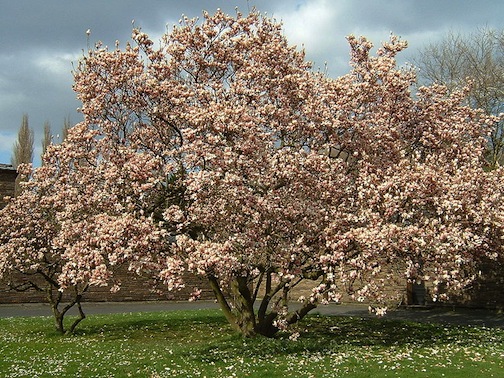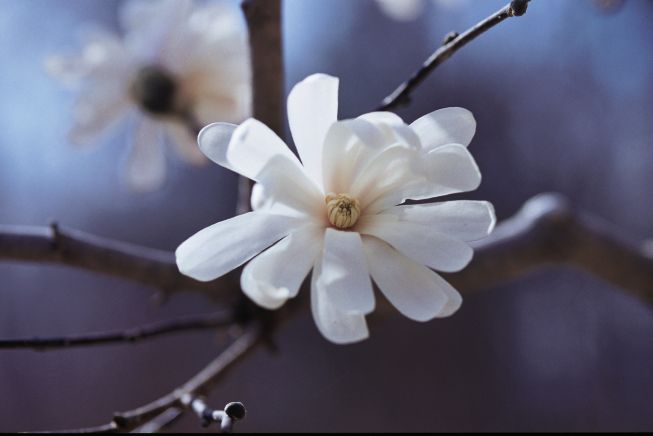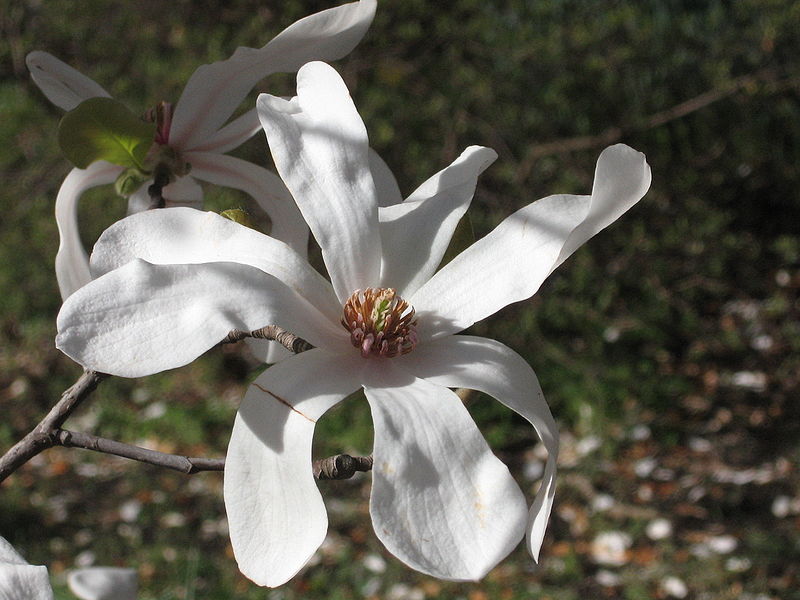| PSC 2620: Woody Trees and Shrub | Course Home | Week 4 |
Magnolia x soulangiana - Saucer Magnolia
Plant Viewer
 |
 |
| The large flowers of the Magnolia are showy and fragrant. form. | The multi-stemmed form is ornamental, and the plant is stunning when in full bloom. Image: Wikipedia |
 |
 |
| In late summer, a small amount of fruit begins to form on the tree and will ripen to a dark red. Image: Wikipedia | The leaf of the Magnolia is elliptic and simple, very unremarkable. |
Plant Description
The Magnolia tree produces one of the most beautiful blossoms displays imaginable. Its showy display of large saucer-shaped white, pink or purple blossoms in early spring is unbeatable. The flowers first appear in large, colorful buds which are silky to the touch and slowly open to a 5-10 inch wide blossoms. Sadly the blossoms are short lived and will fade within two weeks, but the short period of profuse blooming is spectacular.
Saucer Magnolia will grow into a small multi-stem tree up to 25 feet high in our climate. It matures into an upright and spreading form with an irregular shape. The dark green leaves are 3-6 inches long and elliptic, trailing to a point on the tip of the leaf. The bottom of the leaf is pubescent. The leaves appear once the blossoming is largely completed and have a bronze overcast during the beginning of spring.
Saucer Magnolia should be planted in full sun and given plenty of water. It is tolerant of many different soil types, though it prefers slightly acidic soil.
Landscape Use
Use as a flowering specimen tree.
Points of Interest
The buds and blossoms are especially susceptible to frost and cold damage. Because of this, flowering can be unreliable in zone 4 and disrupted by a cold snap in our climate, especially during an early spring.
Magnolia x soulangiana is susceptible to leaf spot, mildew and scale.
Notable Cultivars
Magnolia stellata - Star Magnolia Star Magnolia is smaller than Magnolia x soulangiana, growing to be about 15 feet high. The white blossoms are also smaller. The blossoms have many narrow petals, giving the flower a light appearance.
Magnolia x loebneri Merrill - Merrill Magnolia Merrill Magnolia is a larger Magnolia (up to 35 feet high). The white blossoms resemble those of the Saucer Magnolia, but are slightly smaller in size.
